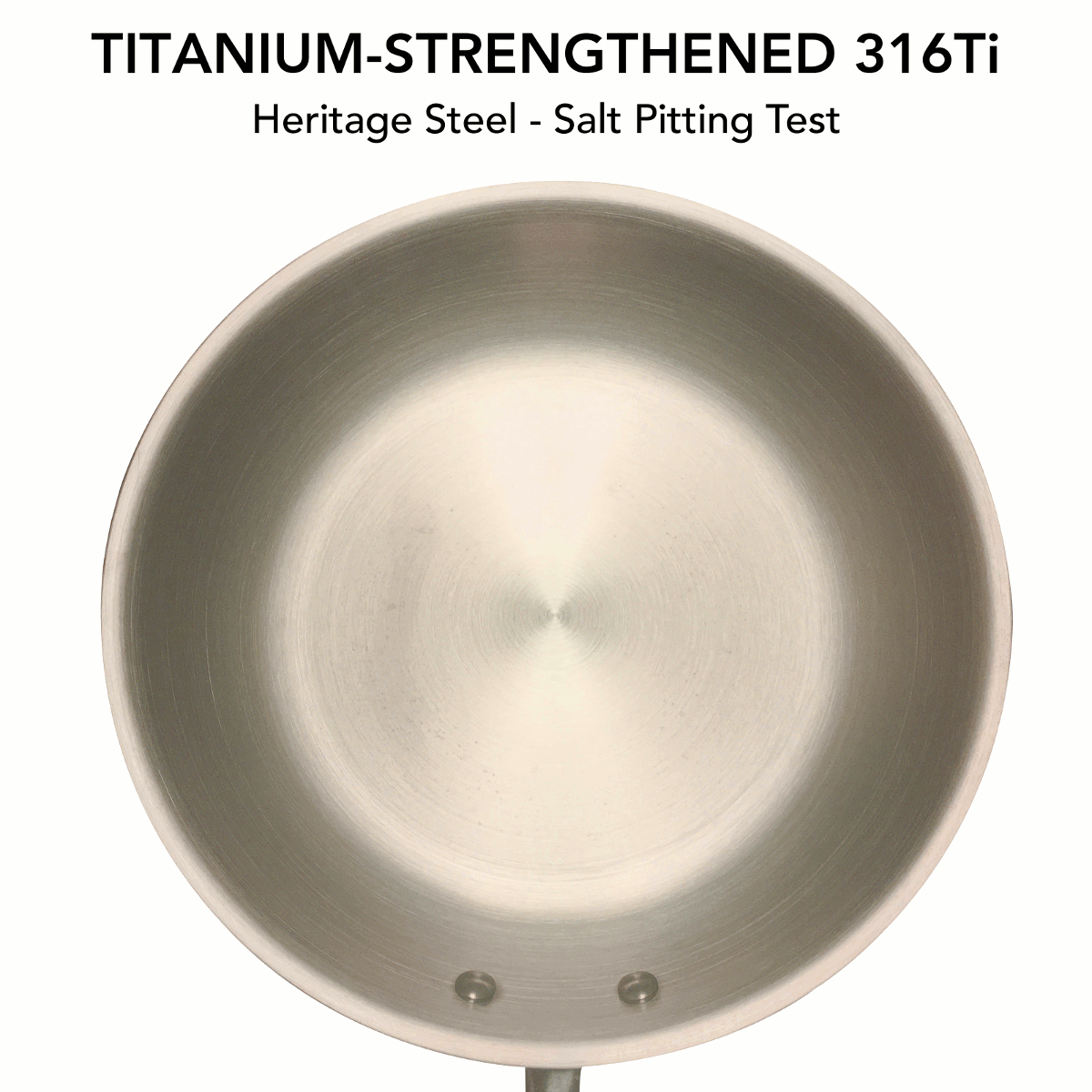Why 316Ti?
One of the distinguishing features of our Titanium Series is the use of 316Ti stainless steel. So, what exactly is it, and how does it improve the quality of our cookware?
What is stainless steel?
At its most basic level, stainless steel is an alloy (a mixture of metals) comprised mostly of iron. Iron on its own will rust, so stainless steel adds in chromium - at least 11% by volume - in order to stop oxidation and prevent rusting. Beyond that basic composition, there is a huge variety of different stainless steel alloys that add in different parts carbon, nickel, molybdenum and more to create different grades of stainless steel.
Different stainless steel alloys have different strengths and weaknesses. Some are designed to be magnetic, while others are optimized for their corrosion resistance. The most common grade of stainless steel used for the cooking surface of a pan is 304, also known as 18/10 (denoting 18% chromium and 10% nickel in its alloy composition). For our Titanium Series, however, we use an alloy called 316Ti, which adds titanium and molybdenum to the alloy to increase its corrosion resistance properties.

Why optimize for corrosion resistance?
While 316Ti is more expensive and more difficult to source than 304 stainless steel, we choose to use it in our cookware for good reason.
Specifically, it is shown to have the following advantages:
[316Ti] austenitic stainless steel exhibits higher resistance than Cr-Ni [18/10] grades against generalized and atmospheric corrosion.
[316Ti] is more resistant to pitting and crevice corrosion than [18/10]. Conventional Cr-Ni [18/10] stainless steels can be used in chloride media containing up to 200 ppm, while those of the Cr-Ni-Mo [316Ti] group can be used in contact with solutions up to 1000 ppm of chloride ions.
Corrosion and pitting are issues that can occur with stainless steel cookware over its lifetime of use. When cookware corrodes or pits, it can leach metal into your food in small amounts.
Learn more: What Makes Healthy Cookware?
So, how do you prevent metal leaching? There are 3 important ways that the 316Ti alloy specifically optimizes for corrosion resistance:
- Increase chromium content: at 18% chromium, 316Ti is well above the minimum of 11%
- Increase nickel content: 316Ti's nickel content ranges 10-14%, increasing corrosion resistance
- Most importantly, add in molybdenum and titanium: these additions "increase resistance to both local (pitting, crevice corrosion, etc) and general corrosion"

Titanium-Strengthened
The added titanium in the 316Ti alloy strengthens and stabilizes its chemical bonds, making it the best solution for resisting metal leaching. To illustrate the difference, we tested the resistance to salt pitting corrosion in typical 304 stainless steel versus the 316Ti alloy we use in our cookware:

Over time this salt corrosion will eat away at the outer 304 layer and expose the aluminum beneath, enabling further metal leaching.









